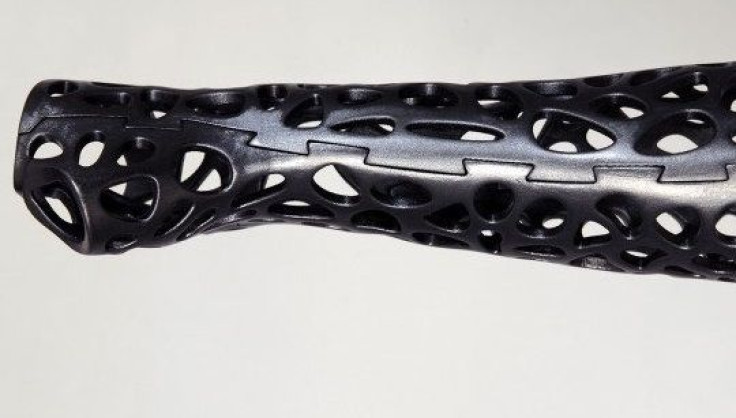3D-Printed Osteoid Cast With Built-In Ultrsound May Heal Bones 38% Faster

The future, it seems, will be filled with 3D printing. It's already been used to produce everything from food to organs, and there’s certainly more to come. In July last year, some of the first prototypes for 3D-printed casts were revealed. But now, researchers have taken the prototype a step forward, adding on a form of ultrasound known to hasten the healing process.
Current casts, which are made of plaster, are not only heavy and uncomfortable, but they also get smelly as they are unable to get wet. 3D-printed casts are the total opposite. The cast revealed last year, called the Cortex cast, was made out of nylon plastic. It was waterproof, lightweight, ventilated, and, once its purpose was served, it could be recycled — not to mention it was also stylish sporting a spider, web-like design. Patients who need it would theoretically get their fracture X-rayed, and then the 3D printer would custom print the cast to the shape of their limb, with extra reinforcement in the injured area.
Deniz Karasahin, the industrial designer behind a similar cast, called the Osteoid medical cast, won this year’s A’Design Award for 3D-printed forms and products. Though his design is similar to the one from last year, it goes a step further, incorporating a bone stimulation system known as low-intensity pulsed ultrasound (LIPUS). The system works by applying “transcutaneous acoustic energy” to the fractured bones, according to a report on LIPUS in the Indian Journal of Orthopaedics.
It’s believed that this low-intensity energy causes mechanical stress at the cellular level on both ends of the broken bone, stimulating “molecular and cellular pathways involved in healing.” Meanwhile, other research purports that the energy causes microscopic gas bubbles to develop within the fractured bone. In turn, these bubbles trap the acoustic energy with tissue fluid, causing a chain reaction in which the fluids circulate within, blood pressure rises around the injury, and healing accelerates “by enhancing gas exchange and nutrient delivery.”
Regardless, Karasahin and his team claim that someone who’s using the cast can undergo 20-minute daily sessions with LIPUS to reduce the healing process by 38 percent while increasing the healing rate by as much as 80 percent. Those rates includes fractures that are nonunion, meaning that they fail to heal correctly. That’s good news for the estimated 6.2 million fractures occurring in the U.S. every year, of which five to 10 percent take longer than expected to heal or are nonunion.
The researchers’ next steps are to develop a more effective locking mechanism that’s “strong enough to protect the limb, practical enough to put it on the fragile injured area and simple enough so that it doesn’t disturb the general form of the medical cast.”



























